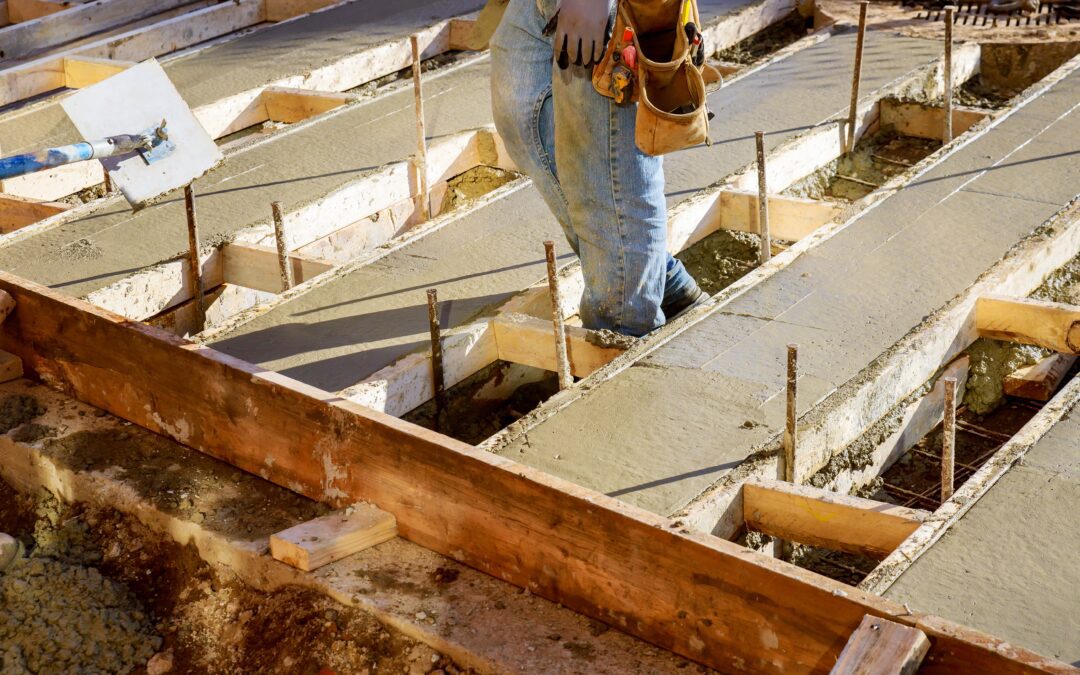When most people think about building a deck, they picture boards, railings, and maybe a nice set of stairs. What they usually do not think about is what goes underground. That is where deck footings come in. While hidden from sight, footings are one of the most important parts of any deck. They support the weight, keep everything level, and prevent damage caused by shifting soil or moisture.
If you are planning a new deck or replacing an old one, understanding footings can help you make better choices and avoid problems down the road. In this guide, we break down what deck footings do, how they are built, and why they matter so much for homes in the Lower Mainland.
What Are Deck Footings
Footings are the structural base that support the vertical posts of your deck. They sit below ground and carry the load of the entire deck into the soil. In most cases, they are made from concrete and placed in holes dug into the ground. The size and depth of each footing depends on the weight of the deck, the type of soil, and local building codes.
Think of them like the foundation of your house. If they are not installed properly, the entire structure above becomes vulnerable.
The Role of Footings in Deck Stability
Footings are not just about holding the deck up. They do much more than that. Here is why they are critical
Load Support
A deck holds more weight than you might think. Furniture, grills, planters, and people all add to the load. Footings distribute this weight evenly into the ground so the deck stays stable and safe.
Preventing Settling
Without proper footings, parts of your deck can begin to sink into the soil over time. This creates uneven surfaces, cracks, and structural stress.
Protection Against Movement
In regions like the Lower Mainland where soil conditions vary and moisture levels change, footings keep the deck from shifting, tilting, or leaning.
Compliance with Building Code
Most decks require footings to be a certain size and depth based on the height and span of the structure. These rules are in place to protect both the builder and the homeowner.
Why Footings Matter More in the Lower Mainland
The climate and soil conditions in our region make footing quality even more important. Here is why
Rain and moisture
With regular rainfall, especially in fall and winter, moisture can weaken soil or cause it to shift. Proper footings are designed to handle wet conditions without settling or failing.
Frost line depth
While we do not experience extreme freezing, frost can still affect soil movement. Footings need to be deep enough to stay below the frost line and avoid damage from freeze and thaw cycles.
Sloped yards
Many homes in the area sit on a slope. This requires extra care to make sure footings are placed properly and support the deck evenly across all elevations.
Types of Footings We Use
Not all footings are the same. At All Hands on Deck, we choose the right type for your specific site conditions and deck design. Common footing types include
Concrete Piers
This is the most common option. A hole is dug below the frost line, and a concrete pier is poured in place. A bracket is then attached to secure the post.
Sonotube Footings
Sonotubes are cardboard forms used to shape poured concrete. They ensure a clean, round form and protect the concrete as it cures.
Helical Piles
For certain soil types or tight access areas, steel helical piles can be screwed into the ground using special equipment. These are strong and ideal for unstable or soft soil.
Precast Footings
In some cases, precast concrete footings are used, though these are more common for low elevation platforms or temporary structures.
We inspect each site before choosing a footing method and follow all local codes and engineering requirements.
What Happens If Footings Are Done Wrong
Improper footing installation can cause serious problems including
- Uneven decks that feel unstable
- Cracks in the frame or surface boards
- Railings or stairs that separate or pull away
- Water pooling around footings and weakening the soil
- Complete deck failure in extreme cases
Unfortunately, many older decks or DIY builds cut corners on footings. When we are called to replace a failing deck, improper footings are often to blame.
Signs of Footing Problems
Already have a deck and unsure about the footings? Look for these warning signs
- Posts that lean or shift
- Cracks or gaps in the concrete base
- Deck movement after heavy rain
- Bouncy or uneven surfaces
- Railings that no longer feel secure
These signs may mean your footings have settled, cracked, or were not installed to code. A professional inspection can determine if repairs or replacement are needed.
How We Build Footings That Last
At All Hands on Deck, we take footings seriously. Here is what we do to make sure your deck starts with a solid foundation
Site Evaluation
We assess your soil type, slope, and drainage before placing any footings.
Proper Depth and Width
We dig to the correct depth based on frost line and load requirements and use forms or rebar when needed.
Code Compliance
We follow all local building regulations to make sure the footings are inspected and approved if a permit is required.
Moisture Protection
We make sure water drains away from each footing and that posts are properly raised above ground to prevent rot.
Our goal is to build footings that you never have to think about again. They just work and keep your deck solid for years to come.
Final Thought
Decks may be built for comfort and style, but they rest on strength. That strength starts underground. A beautiful deck will not last long if the footings are weak or poorly placed. That is why we make sure every project is grounded in solid construction from the first dig to the final board.Planning a new deck and want it built to last? Contact All Hands on Deck to schedule a visit and learn more about how we build strong from the ground up.



Recent Comments